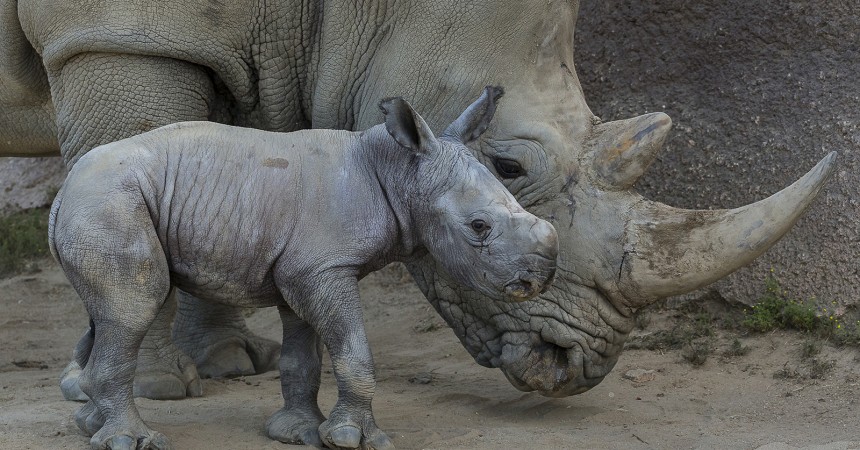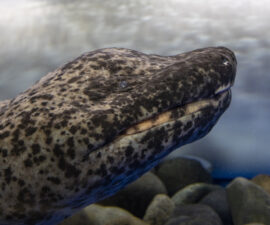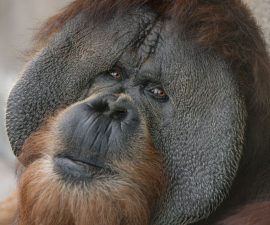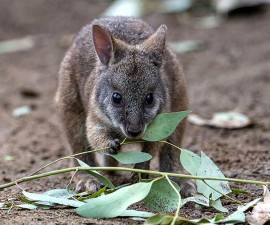A three-day-old male southern white rhino calf at the San Diego Zoo Safari Park nursed, rested, and curiously checked out his surroundings this morning—all under the watchful eye of his very attentive mother. The calf, yet to be named, was born in the Safari Park’s East Africa field habitat on April 2, to mother, Holly, and father, Maoto (pronounced May-O-toe).
“We are very excited Holly gave birth to a healthy calf,” stated Kim Shuler, senior keeper, San Diego Zoo Safari Park. “The calf is nursing well, which is a great sign. Holly is an excellent mom and very protective of her newborn. She allows the other rhinos to approach, but gets very vocal when they venture too close to her little guy.”
While all births of healthy rhinos are significant, researchers at the San Diego Zoo Institute for Conservation Research are optimistic this calf’s birth may be the result of a recent change in the southern white rhinoceros diet.
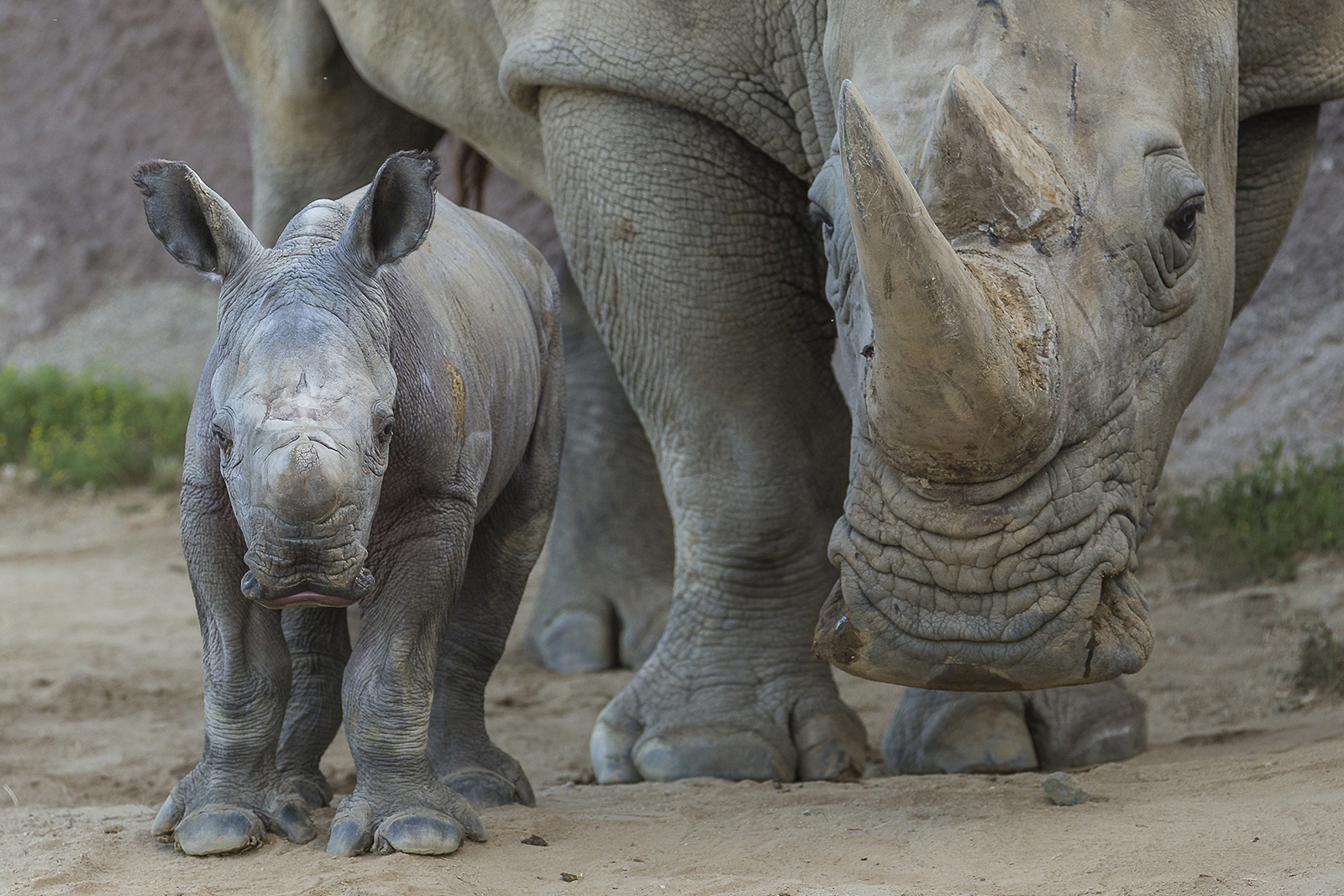
Christopher Tubbs, Ph.D., a scientist in the Reproductive Physiology Division of the San Diego Zoo Institute for Conservation Research, and his colleagues have been working for eight years to determine why southern white rhino females born in zoos—like Holly—tend not to bear offspring as often as their wild relatives. This problem is not found in other species of rhinos living in zoos. Through extensive research, it was discovered that the animals may be sensitive to compounds called phytoestrogens found in soy and alfalfa, which are a component of the animals’ diets in zoos. During their 16-month gestation, female calves could be exposed to the compounds through their mother’s diet, resulting in permanent infertility issues later in their life.
On the basis of these findings, the nutritional services team at San Diego Zoo Global changed the diet of the southern white rhino. First, they reduced the amount of pellets, rich with soy and alfalfa, fed to the rhinos. Next, they developed a grass-based pellet for the rhinos, low in phytoestrogens and supplying nutrients to support reproduction. Approximately two years after the diet changes, three females—two that had never successfully reproduced before, including Holly—became pregnant.
“Holly showed no evidence of pregnancy for the past 10 years, despite breeding,” stated Christopher Tubbs, Ph.D., scientist in the Reproductive Physiology Division at the San Diego Zoo Institute for Conservation Research. “This successful birth gives us tremendous hope that diet changes can improve fertility in captive-born females of this species, which for decades have struggled to reproduce.”
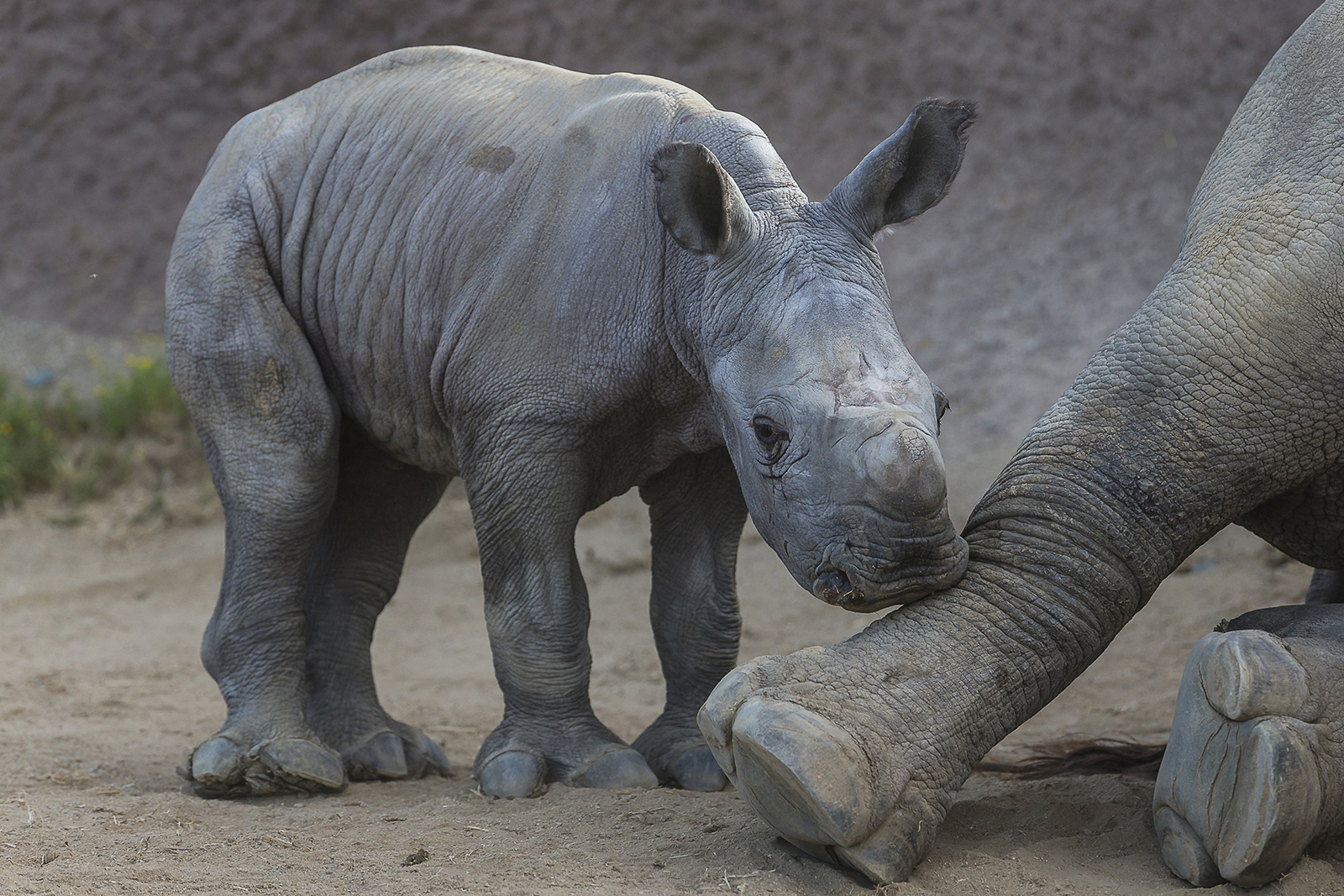
The research project has reached a real point of urgency, due to the increase in poaching in recent years that has dramatically affected rhino populations in the wild. When the project began in 2007, 13 rhinos were poached (that year). In 2015, more than 1,400 southern white rhinos were poached in South Africa—one every eight hours. “More than ever, we need a self-sustaining population of white rhinos established outside of Africa,” stated Tubbs.
San Diego Zoo Global has been working for over 40 years, along with other accredited zoos, to keep a sustainable population of rhinos safe under human care while working to protect them in sanctuaries in the wild. Rhinos are poached for their horn, which is made of keratin—the same material that forms human fingernails. Rhino horn has been erroneously thought to have medicinal value and is used in traditional remedies in some Asian cultures. In addition, objects made of rhino horn have more recently become a “status symbol,” purchased to display someone’s success and wealth, because the rhino is now so rare and endangered. There are an estimated 18,000 southern white rhinos remaining in the wild. At the current rate of poaching, these rhinos could become extinct in 15 years.
To further its commitment to rhino conservation, San Diego Zoo Global recently built the Nikita Kahn Rhino Rescue Center to house six southern white rhinos brought in from South Africa. The 3.5-acre state-of-the-art animal facility is dedicated to the conservation of white rhinos, with a focus on assisted reproductive techniques.
Rhinos are very important to the ecosystems in which they reside. Southern white rhinos live in the savannas of Africa. These gentle giants are mega-herbivores, grazing on grasses—which helps maintain the diverse African grasslands, increasing plant diversity and providing grazing areas for other animals that share their natural habitat, such as elephants, zebras, antelope and gazelles.
Holly’s calf is the 95th southern white rhino calf born at the San Diego Zoo Safari Park since 1972. Estimated to weigh around 125 pounds, the little ungulate with huge feet and big ears will nurse from his mother for up to 14 months; he is expected to gain about 100 pounds a month for the first year. When full grown, at around 3 years of age, he could weigh 4,000 to 5,000 pounds. The rhino calf and mom can best be seen roaming their habitat from the Park’s Africa Tram Safari or a Caravan Safari.

